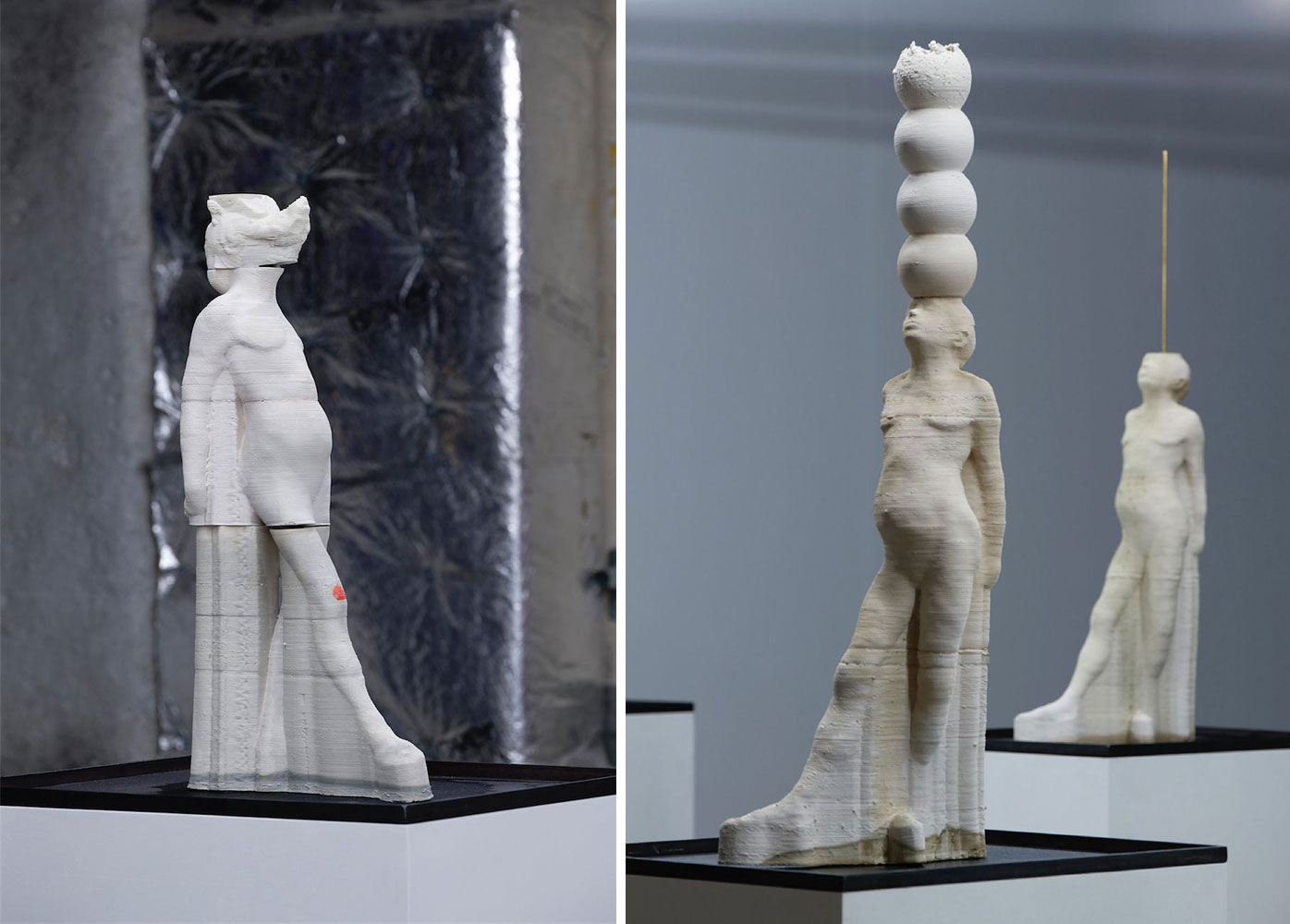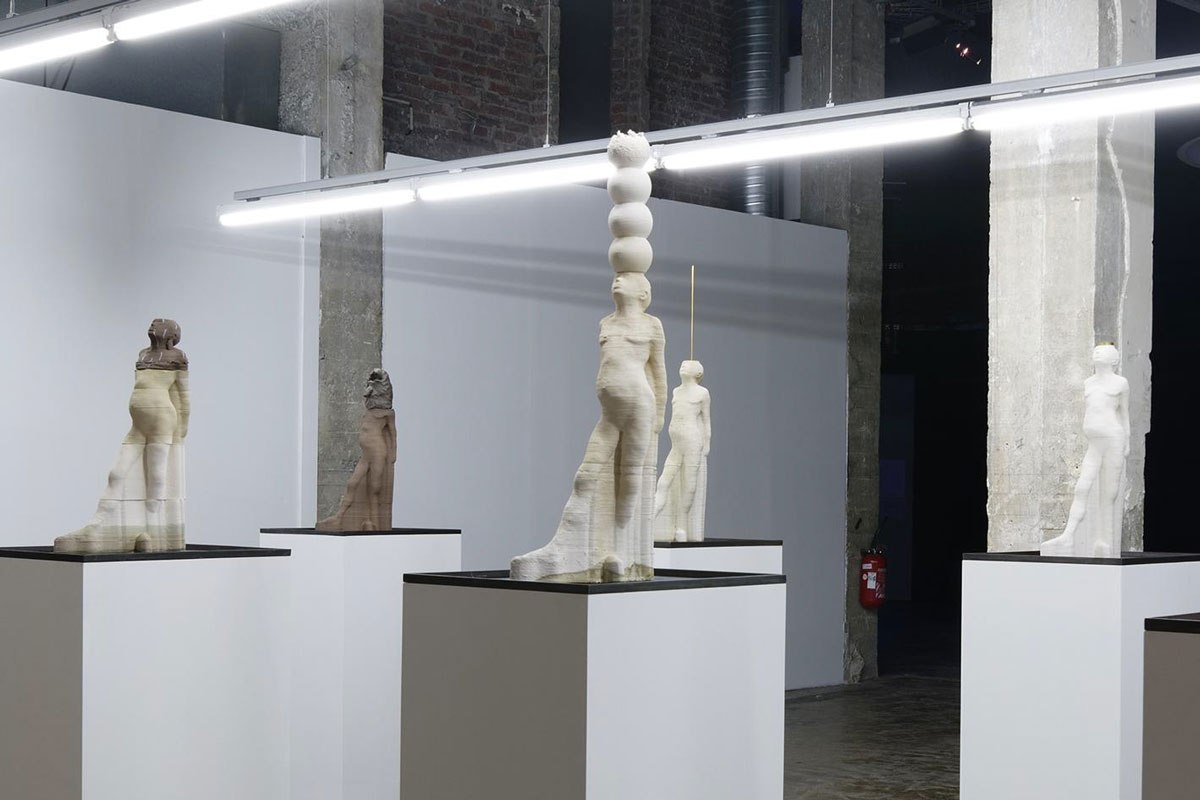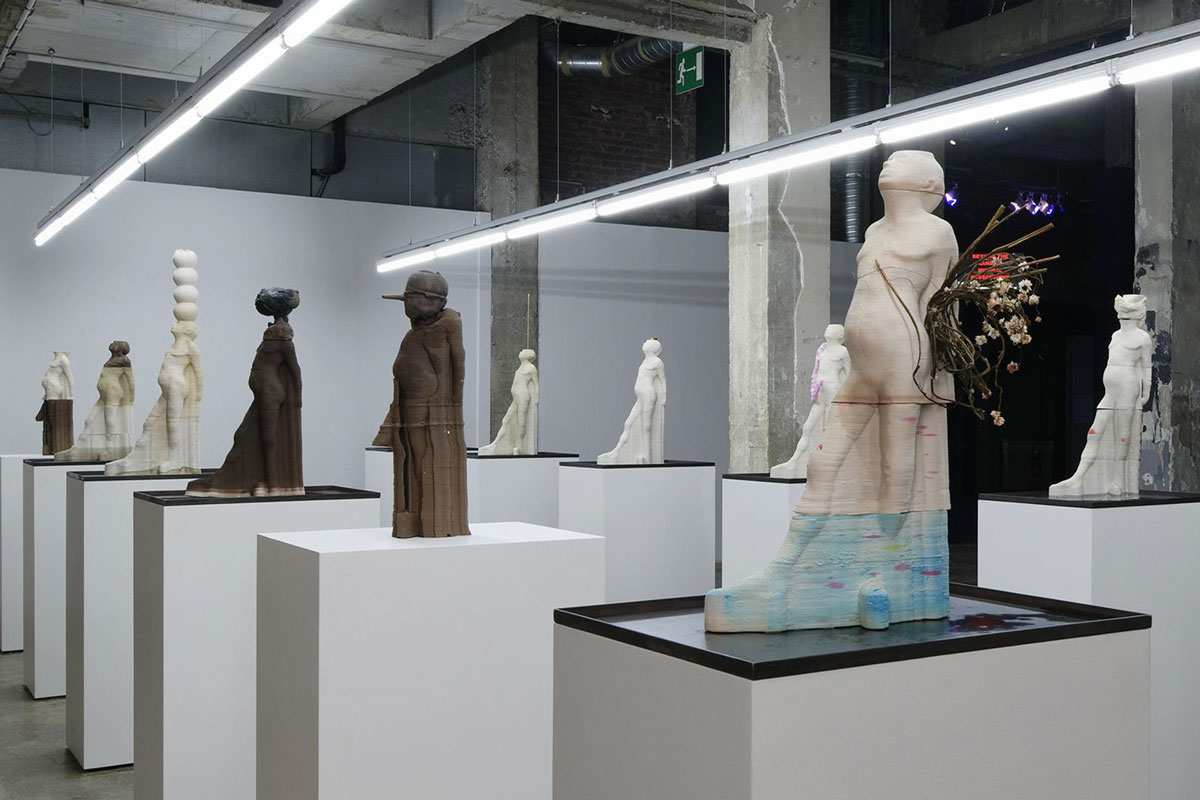ART-PRESENTATION: Antoine Renard-AMNESIA
![Antoine Renard, Resource operations part II (Eden Park) [Detail], 2017, Gips, metal, tar, bones, resin, casted aluminium, woods and found objects, 400 x 210 x 190 cm, Exhibition view at In Extenso, © Clermont Ferrand, courtesy the artist and Galerie Nathalie Obadia](http://www.dreamideamachine.com/web/wp-content/uploads/2021/02/008.jpg) In Antoine Renard’s sculptures, and more occasionally his videos, paintings or performances are run through with the feeling of a biological, technological or political fault-line, showing up the corruption of systems. Drawing as much from adolescent fascinations, ritualised practices and the continuous flow of information that contaminates the news threads on social media, his work comes over as an unfathomably distorting mirror of the future of western society.
In Antoine Renard’s sculptures, and more occasionally his videos, paintings or performances are run through with the feeling of a biological, technological or political fault-line, showing up the corruption of systems. Drawing as much from adolescent fascinations, ritualised practices and the continuous flow of information that contaminates the news threads on social media, his work comes over as an unfathomably distorting mirror of the future of western society.
By Efi Michalarou
Photo: Galerie Nathalie Obadia Archive
Antoine Renard’s exhibition “AMNESIA” brings together a group of 27 olfactory sculptures, which are an extension of those shown at the Palais de Tokyo in 2019. Made in ceramic using a 3d printer, and inspired by Degas’s little dancer, an iconic and scandalous work of modern art, they question the body-object as a truly contemporary condition. Antoine Renard is interested in memory, simultaneously physical, historic and olfactory. Operating layer by layer based on digital modeling, 3d printing functions like a memory process, which, similarly to lengthy sedimentation, gives body to a virtual projection. Different timelines seem to intermingle in these works: while 3d printing attests to a contemporary, somewhat surreal aesthetic, certain irregularities and imperfections create the illusion of an eroded, ancient material, and seem to incarnate the stigmata of a past life. Ceramic, thus stratified, recalls the slow historical process that allowed us to uncover the hidden existence of a young Marie Van Goethem, Degas’s model, a penniless little ballerina at the Paris Opera, who fell prey to the patrons’ lust and the merciless judgement of her contemporaries. The olfactory dimension of the sculptures inscribes itself squarely in this work around memory and the way it shapes bodies. Antoine Renard, who, during his residency at the Villa Medici, studied the ritualized practices of perfume in Rome and who shadowed “parfumero” healers in Peru, composes each scent himself from plants that he macerates or synthetic molecules. Perfume’s propensity to bring up memories deepens this connection with the truth of the sitter, whose presence and identity the artist restores. This work on odors also attests to the impact of nuance and pays homage to a person’s infinite complexity, reduced, during that individual’s lifetime, to caricature and silence. With tools belonging to his own time, Antoine Renard transposes this young dancer’s history and attitude into our own society, marked by big-business domination, consumerist lobbies and all-powerful algorithms. But, above all, it shows that this pose, denoting at once captivity, rebelliousness and eagerness, is still pertinent at a time when attention has become a marketable value, when each individual has consumerist potential. A vast, immaterial platform that concentrates and multiplies these issues, digital technology occupies a crucial place in the artist’s oeuvre. From a formal point of view, 3d printing, coupled with the re-compositions made by the artist, offers a slightly virtual rendering, which recalls the vacillating silhouette of a hologram. Antoine Renard thus evokes the questions of the body versus digital technology and, more widely, of the individual within a system that constantly seeks to grab people’s attention, at the cost of a certain loss of self. With her upturned face and her eyes closed, this young woman embodies a state of vulnerability, of receptivity, of the mise-en-scène of the self, characteristic of this form of contemporary alienation. While the perfume industry always associates itself with a key concept, a marketed image, here the multitude of fragrances recalls, on the contrary, an elusive aura and instills a greater density into the relationship with the other. The scenography imagined by the artist underlines, in fact, the model’s ambivalent attitude, which contributed to her legendary posterity. Like an army of clones spread out on a precise grid and individualized by their pedestals, the layout of these works accentuates the affront: it sets the stage for a personal and massive resistance. By taking for subject this sculpture (whose original in wax formed the basis for numerous bronze copies scattered among museums around the world), Antoine Renard multiplies once again, while prolonging and strengthening his message. The ambiguity of this work comes from a very timely duality, oscillating between values traditionally associated with femininity and masculinity. His young ballerinas thus become tangible bodies, by detaching themselves progressively from their bases, like high reliefs from a distant past, on the brink of independence—the evolution of sculpture is also put into perspective in this exhibition.
Photo: Antoine Renard, Resource operations part II (Eden Park) [Detail], 2017, Gips, metal, tar, bones, resin, casted aluminium, woods and found objects, 400 x 210 x 190 cm, Exhibition view at In Extenso, © Clermont Ferrand, courtesy the artist and Galerie Nathalie Obadia
Info: Galerie Nathalie Obadia, 18 rue du Bourg-Tibourg, Paris, Duration: 5/2-24/3/2021, Days & Hours: Tue-sat 11:00-19:00, www.nathalieobadia.com

Right: Antoine Renard, Impressions, apres Degas (#03) 2019, 3D printed ceramic, fragrances. 35 x 20 x 70 cm, © Clermont Ferrand, Courtesy the artist and Galerie Nathalie Obadia


